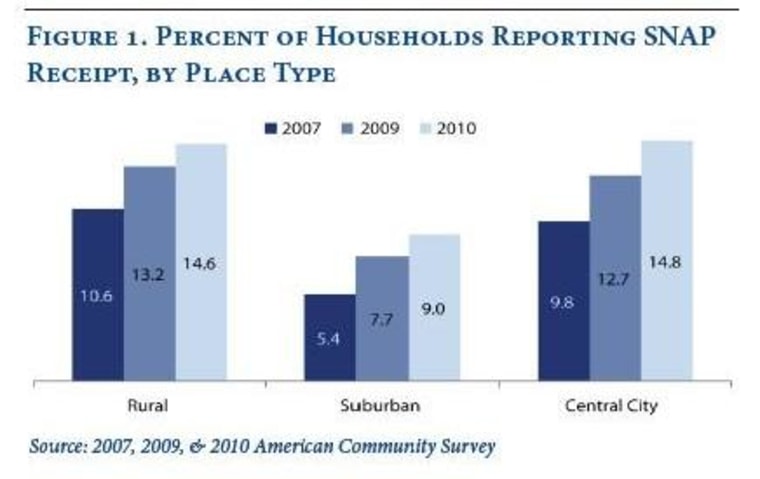Given what we know about the poverty rate and the current state of the economy, it should come as no surprise that more people are relying on food stamps these days.
But you may be surprised to find who receives food stamps, and where they live.
A new report from the Carsey Institute, which researches vulnerable children, youth and families, finds that 14.6 percent of rural households were relying on the Supplemental Nutrition Assistance Program in 2010.
That’s nearly the same as the percentage of households in inner urban areas who use the food and nutrition program for low-income households, also known as SNAP.
Both urban and rural households have seen SNAP use increase sharply between 2007, when the recession began, and 2010, as the nation struggled with a weak economic recovery.
Suburban households are less likely to receive SNAP benefits, but usage is on the rise. About 9 percent of suburban households received SNAP in 2010, up from 5.4 percent in 2007.
Jessica Bean, a vulnerable families research associate with the Carsey Institute, said she thinks rural residents have traditionally been less likely to collect SNAP benefits because they live in remote areas where it’s hard to access social services and are more concerned with the social stigma.
In a rural area, she said, “When you go into the grocery store and you pull out your food stamps card, everybody knows you.”
Carsey’s research also showed that the program is often helping out working poor families.
About three-fourths of households who receive SNAP benefits have at least one adult in the household who is working, according to Bean. Still, the median household income for SNAP recipients was about $18,000 in 2010, compared to an overall median income of around $50,000.
The average SNAP benefit is about $290 a month.
The program is also disproportionately helping single-parent families. Four in 10 single mothers with children are using the SNAP program, according to Bean’s research, while 1 in four single dads with kids are relying on them.
Just 1 in 10 married couples with children are using the government-funded food benefit.
Related: Hey middle class, tell us about yourselves
